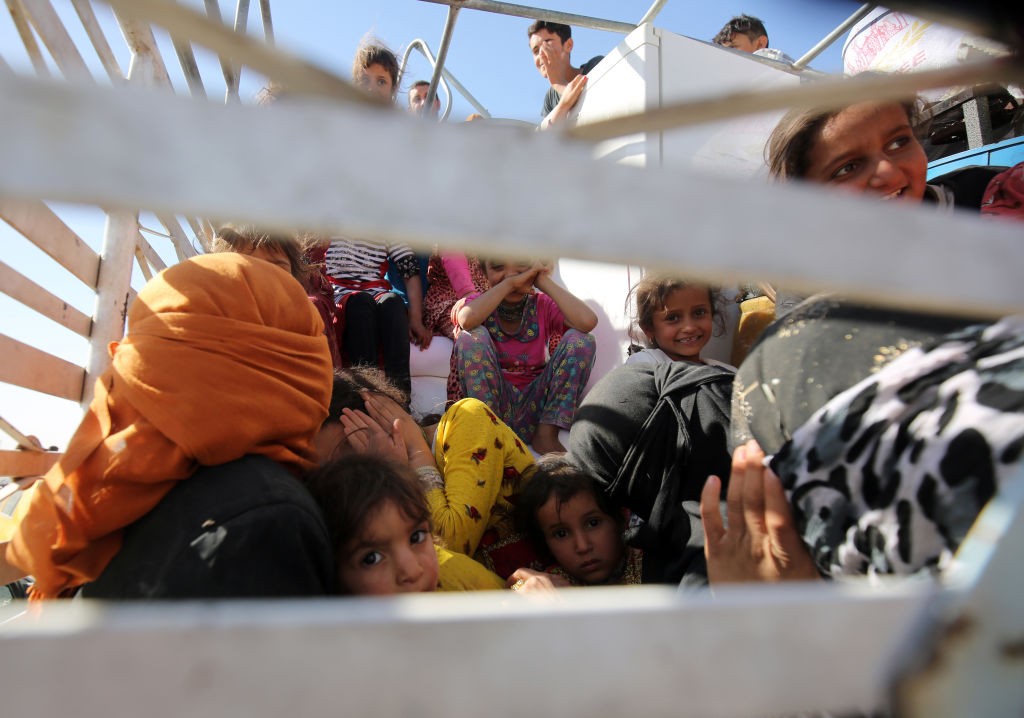
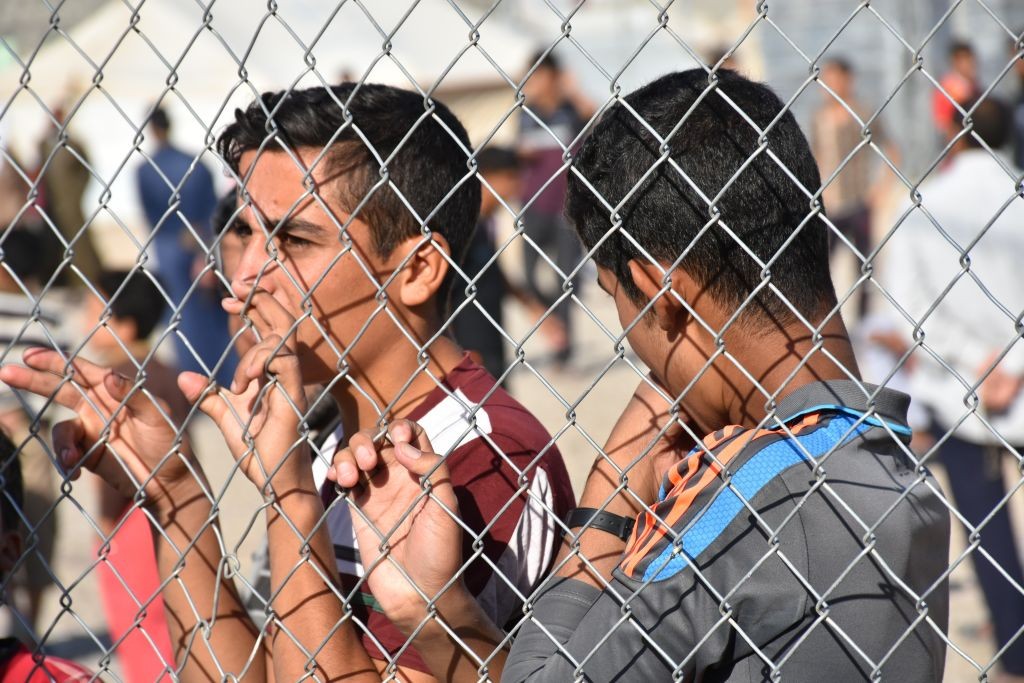
Summary
The story from Iraq since last October has been mainly one of uplifting hope, as mass protests sweep across the country in a fight against corruption, nepotism, and bad governance. But what of the places left behind and ignored? For most of its modern history, Iraq has been embroiled in sectarianism and conflict, most recently with the rise of ISIS. The country has celebrated its ability to fight ISIS and take back the areas the group controlled between 2013 and 2017, but for those that remain in the most vulnerable liberated areas, life is precarious and dangerous, with underserviced communities living in the most dire of conditions.
Introduction
The story from Iraq since last October has been mainly one of uplifting hope, as mass protests sweep across the country in a fight against corruption, nepotism, and bad governance. Even as violence against the protest movement tempers expectations of the opportunities for real change, the protestors have become a symbol of hope for all Iraqis.
But what of the places left behind and ignored? For most of its modern history, Iraq has been embroiled in sectarianism and conflict, most recently with the rise of ISIS. The country has celebrated its ability to fight ISIS and take back the areas the group controlled between 2013 and 2017, but for those that remain in the most vulnerable liberated areas, life is precarious and dangerous, with underserviced communities living in the most dire of conditions.
While the international community focuses most of its efforts on rejuvenating and rebuilding the areas of Anbar or central Mosul City, the wider (and mainly disputed areas) of Ninewah Province, alongside Kirkuk and Diyala remain neglected, and civilians are left to fend for themselves in a post-war landscape where only hardship endures. With the additional burden now of the novel coronavirus COVID-19, cases of which have been reported in Kirkuk, these communities will be especially vulnerable as medical facilities remain scarce.
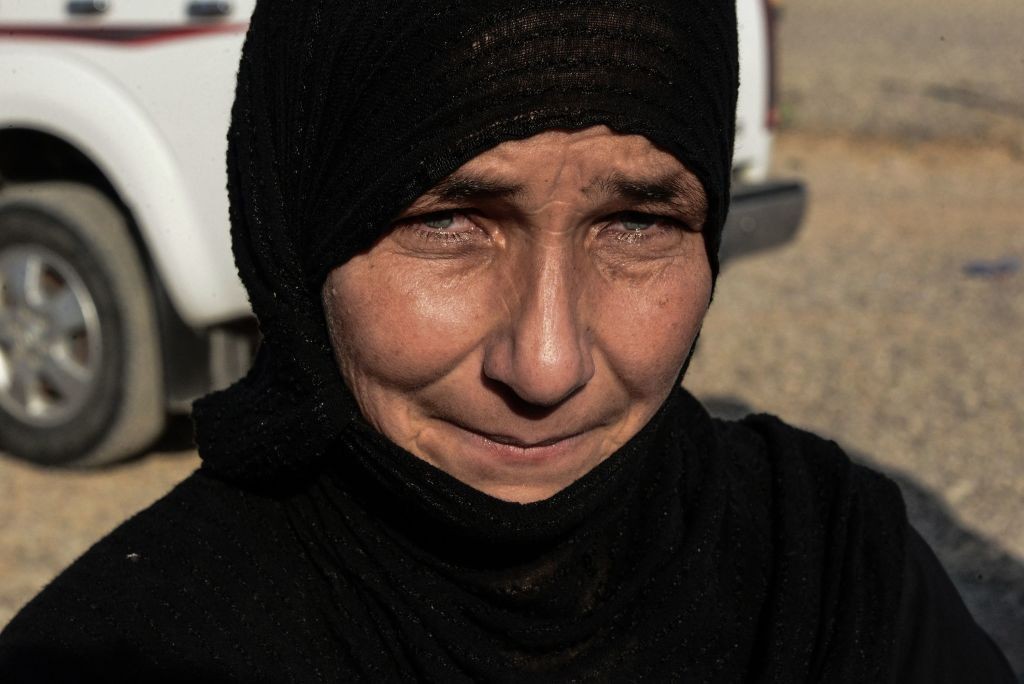
"Ninewah Province ... Kirkuk, and Diyala remain neglected, and civilians are left to fend for themselves in a post-war landscape where only hardship endures."
Security and movement
In Kirkuk and Diyala provinces, rehabilitation is hindered by the presence of active ISIS sleeper cells.1 Attacks occur daily and mainly target security forces and community leaders. In Hawija City in Kirkuk, Iraqi Security Forces and Hashd al-Shaabi (Popular Mobilization Forces) militias are present in the area and have divided up the city and wider district among themselves, each exerting control within their swath of territory. However, areas around the wider district such as Abbasi and Zab remain insecure most of the time. The only major highway through the province is manned by a checkpoint that closes at 5pm, making travel difficult and trapping citizens inside or outside of the city. As night falls, a self-imposed curfew comes into effect across the district as security forces disappear, fearing ISIS attacks. Citizens recount stories of families gathering in one house (commonplace as they often live close together in parallel streets), while armed male family members take to the roofs to protect their homes and families from ISIS attacks. Mullahs and other community leaders continue to periodically flee from Hawija City to Kirkuk City as they have become popular targets for ISIS, which still lingers in the nearby mountains.
In Diyala, the situation is even more precarious as ISIS remains far more active, impeding any attempt at a return to normal life. Daily attacks can number anywhere from four to a dozen, according to security experts monitoring the situation.2 Areas like Jalawla remain impossible to reach, while larger cities such as Khanaqin or Baqubah are becoming increasingly insecure the longer the situation is ignored.
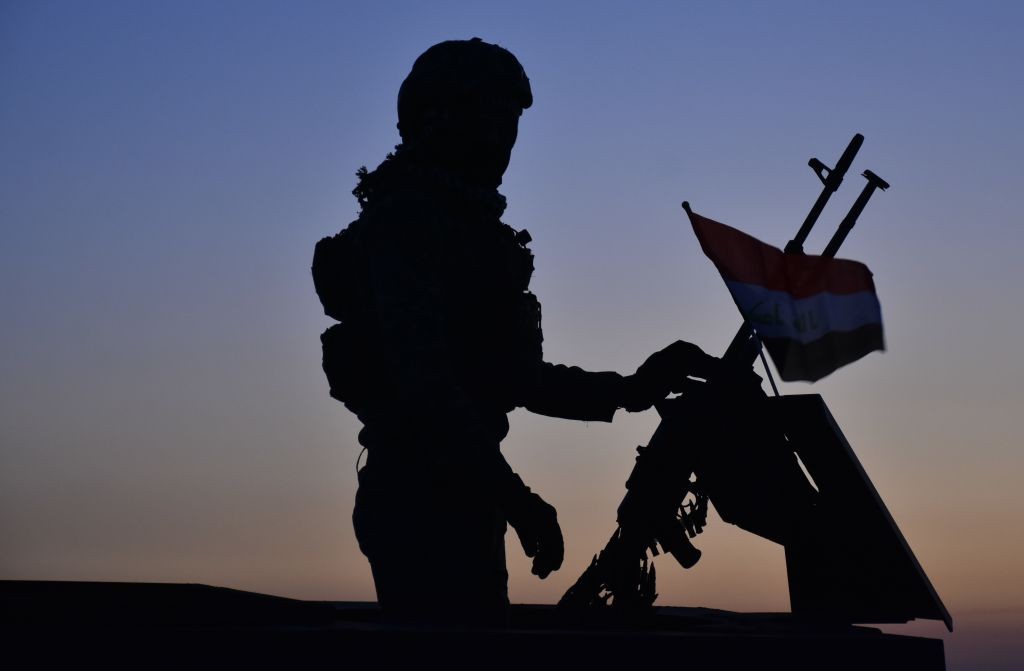
"In Kirkuk and Diyala provinces, rehabilitation is hindered by the presence of active ISIS sleeper cells. Attacks occur daily and mainly target security forces and community leaders."
“It’s lawless here, only God rules us”
As the central and regional governments in Baghdad and Erbil respectively focus on disputes over the division of power or issues that garner greater international attention, local rights actors and NGOs are left to fend for themselves for the most part, to serve their communities and the hundreds of thousands of internally displaced persons (IDPs) that remain in the provinces.3
The International Organization for Migration (IOM) has posted positive trends on its migration tracker, indicating a decreasing number of IDPs in recent months, while the Iraqi government has announced over a million IDPs have returned home in 2019.4 While there are certainly a significant number of returnees going home in areas such as Mosul, IDP movement is not linear, and does not follow a single pattern of displacement. The government imposed immediate guidelines to close a number of IDP camps during 2019, with no coherent policy on how to continue supporting vulnerable people and communities upon their return. In Kirkuk Province, for example, of the six camps set up to support IDPs, only two remain open, with four closing in the last 12 months; in recent months camp closures have also taken place in Ninewah Province.5 For those who want to go home, their efforts are largely thwarted by fiefdoms of power that control their access to land, housing, and property rights, or citizenship documents. The vast majority of IDPs across the liberated areas are women — most of whom are female-led households — children and the elderly. For women who have lost husbands in the war, whether through imprisonment, disappearance, or death, there is no recourse to prove ownership of property, or — for those with children born during the war in those areas — proof of citizenship for children allegedly born to ISIS fighters or members.
As the camps are forcibly closed by the government, hundreds of thousands of IDPs have had to return against their will to their areas of origin. For those who refuse or can’t go home, they simply re-displace to new areas, albeit without the support of international organizations or the government. They, therefore, fall out of the tracking mechanisms altogether. This number accounts for the vast majority of those whose areas of origin are the wider districts of Sinjar, South Mosul, Hawija, and cities within Diyala Province (where displacement is more localized).6
For those who stay in the camps, the standard of living depends on where you are displaced and how you were displaced. In most areas, camps are divided into those for “IDPs” or “ISIS families” and labelled accordingly.7 Evidence for how this distinction is made is not readily available, nor is it clear how the latter are identified. “ISIS families” is an expansive term that includes a large web of family relations, in some cases legitimately connected to an identified fighter or family that supported ISIS. In others, the link is weak at best. The camps for “IS families” remain underserviced, with informal special permission required from local security actors for any NGOs to access them.8 Many local NGOs use personal relationships and forms of bribery or “quid pro quo” to gain access to these camps. IDP camps by contrast are generally better serviced, although in some areas there appears to be little difference between the two. IDPs in camps in Ninewah can move freely, work outside the camp, and ensure their children receive some form of education. In Kirkuk and Diyala, however, the situation is starkly different.
Interviews conducted with rights workers, local NGO officers, and those monitoring security movements paint a dark picture of cyclical assault, extortion, and violence in the camps at the hands of Iraqi Security Forces and the Hashd al-Shaabi militias that control the areas.9 Stories of night-time sexual assault of women and children are common in the camps, and daily extortion, forced bribes, and prostitution have become a fact of life for those there. One local NGO officer tells of security forces in Kirkuk who round up “the caravan” each night to drive dozens of officers into the camps to abuse and assault women and children.10
For those rights workers who continue to work in these areas, the situation remains dire. The international community is all but absent in Kirkuk and Diyala. Emergency response teams are locally manned with no international personnel present.11 Deemed too dangerous for international actors to even visit, there is little oversight or control over how funds are spent, or how the organizations are run. As such, resentment within local communities is increasing, even if they are the only ones trying to help. On the ground, nepotism is the new form of security clearance, where NGOs are forced to hire certain members of tribes, or relations to those in local government in order to maintain their access to the area.12 What little international attention there is often goes to nothing more than surveys about how people regard their quality of life. “We are so tired of people who come here, and just ask questions. You keep asking us what we want, what we need, and in the end, you provide us nothing.”13
In other cases, the international aid and development community’s role and impact has become a subject of debate, with some local actors arguing they are doing more harm than good. Where there is international support and aid for the upkeep of camps and for IDPs, there is no successful partnership with the government to begin to rebuild host communities for people to return to their areas of origin. As such, IDPs who are able to find shelter and have access to food and education for their children, healthcare, and even in some cases jobs (whereby INGOs employ members of camps, or from host communities), no one is encouraged to go home. The INGO culture is breeding a new society of the displaced, whereby life in a serviced IDP camp is better than going home. This is also true of the ongoing brain drain. A vast number of professionals — teachers, healthcare workers, doctors, etc — have themselves been displaced from conflict zones and are now employed by the international community. Most of them were government workers before the war, earning measly salaries.14 Even as the government attempts to force them to return, threatening to suspend their licenses, it is no surprise that with livelihoods and a better of standard of living due to their new jobs in the international community, no one wants to return to what they had before.
Elsewhere, there is evidence of discrimination based on displacement, even at the international level. One former U.S. diplomat recounted how IDPs were provided a helpline to contact to receive aid or various forms of support on offer through the U.S.’s many support channels. Each officer had to ask anyone calling, “which conflict are you displaced from?” — and only those IDPs displaced from the conflict against ISIS were deemed to be eligible for help. This is despite the fact that Iraqis have now been suffering displacement for more than 15 years, as cycles of violence continue. Many of those displaced by the war against ISIS were previously displaced in earlier conflicts.15
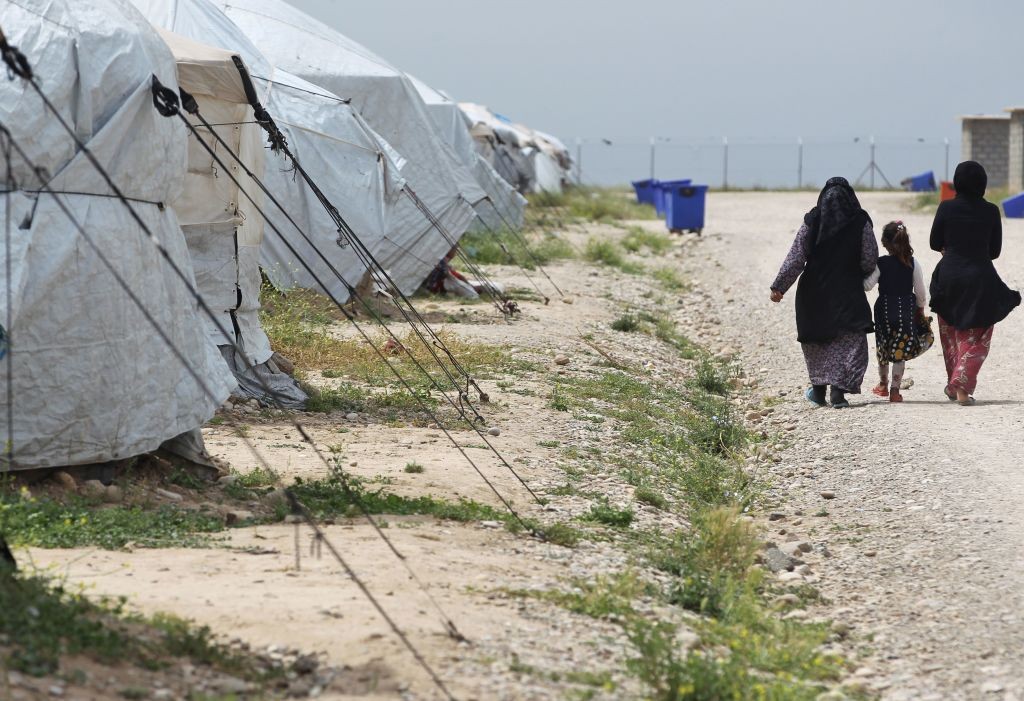
"The government imposed immediate guidelines to close a number of IDP camps during 2019, with no coherent policy on how to continue supporting vulnerable people and communities upon their return."
Where is the government?
Although there are questions and concerns about the impact or role of the international community, ultimately responsibility lies with those in government. Following the war against ISIS, this requires coordination and effective action from the governments in both Erbil and Baghdad. Neither the government led by Adel Abdul-Mahdi, nor that of his predecessor Haider al-Abadi has acted in any material way to combat the crisis. Furthermore, while the Kurdish Regional Government (and more specifically local government in Dohuk Province) is rightly praised for how it has dealt with the refugee crisis in its area without financial support from Baghdad, both governments continue to shirk their responsibility in the most sensitive of liberated areas, which are, unsurprisingly, also those that are disputed between Baghdad and Erbil.
Iraq is managed through national and local fiefdoms of power. Owing to the difficulties of receiving legal NGO registration from Baghdad, most organizations — local or international — prefer to register in Erbil, where the Kurdistan Regional Government (KRG) facilitates this in a more coherent fashion. However, being registered in Erbil does not allow an organization to work in parts of federal Iraq beyond the disputed areas where the Kurdish Peshmerga exerts local security control. This means no groups can access most of Diyala, parts of Ninewah that are beyond Peshmerga control, or Kirkuk where the KRG is not the leading government actor. Instead of facilitating concurrent Baghdad/Erbil permissions, groups now maneuver local government, tribes, and security actors as and where relevant to access different areas, on an ad-hoc basis. While this may mean support is not delayed from the outset, it also means it is intermittent as groups can be stopped whenever local actors choose, with no formal system governing activity.
On a national level, the Abadi government introduced the infamous (JCMC) in 2014 to coordinate and control the presence of the international community and NGO support writ large. However, it was not until the Abdul-Mahdi government in 2018 that the JCMC was properly implemented at all. Co-chaired by the government and the UN Assistance Mission in Iraq, (UNAMI), it supposedly works to monitor and support all assistance in the country. In practice, however, it has proven to be a bureaucratic nightmare. The JCMC produces documents that act as nationwide permission to work in a civil society capacity for all international actors in the country, and some local actors working on specific issues under JCMC control. These documents must be produced from Baghdad and renewed every 30 days — a rule that has proven impossible to comply with.
In reality what has happened, most notably in Diyala, Kirkuk, and Ninewah, is that local branches of government power and security forces have taken matters into their own hands. Ignoring orders or rules issued by Baghdad, local groups scramble to please one security actor or government official over another, each of which in turn demands its own set of permissions or documentation to work and move in a given area.16 Given the lack of formal security structures, local governments and their allies have run amuck within their own power circles.
Furthermore, little to no work has been done to both prepare host communities for the return of IDPs, or vice versa. In Sinjar district, the Yezidi community is actively blocking attempts to return by Sunni Arabs who reside in nearby areas, such as Rabea village. As the central city and district are basically outside the control of the Iraqi and Kurdish security forces — owing to large trust deficits that were exploited during the war by factions of the People’s Protection Units (YPG) and Kurdistan Workers’ Party (PKK) — the local Sinjar Brigades allied to the PKK handle most of the security and governance in the area, as well as (periodically) the Iraq/Syria border. Even as millions of dollars are being spent in an attempt to reconstruct certain areas, such as Sinjar, large parts of the district remain unlivable. Tens of thousands of mines have been laid across the area, and as yet there is no definitive plan for de-mining or making it safe for civilians to return.
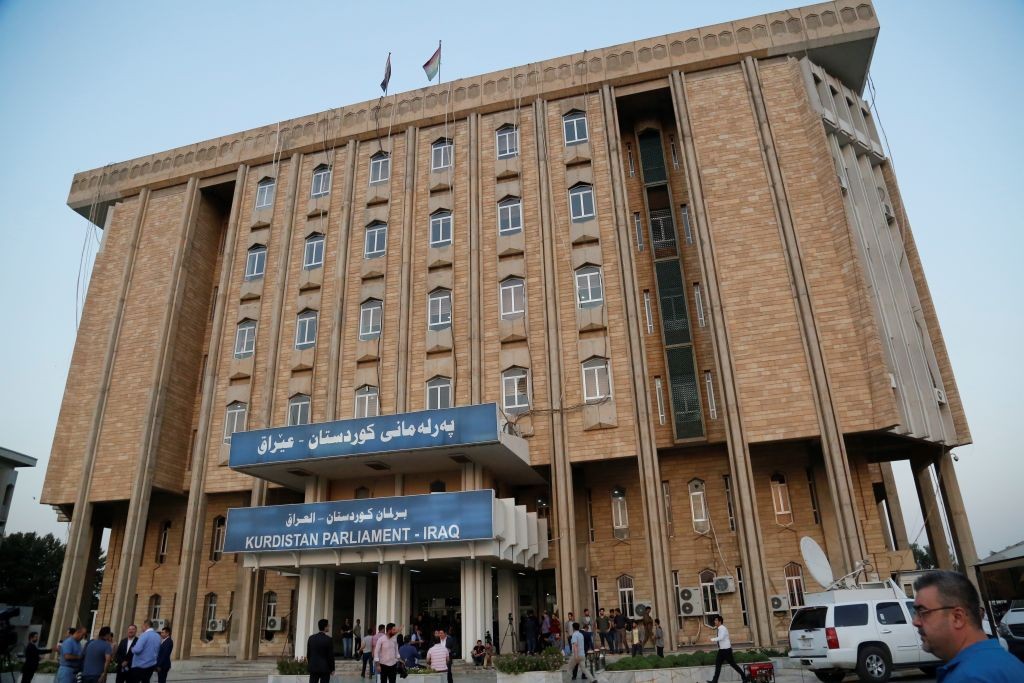
"Owing to the difficulties of receiving legal NGO registration from Baghdad, most organizations — local or international — prefer to register in Erbil, where the KRG facilitates this in a more coherent fashion."
Abandoned and ignored
For those in Kirkuk and Diyala, they are left feeling abandoned — not just by their own government and security forces, but also by the international community. In lengthy discussions with rights actors in these provinces, all of them laughed out loud when I quoted the official UN figures or government statistics reflecting some sort of improvement. “Life in Kirkuk now [2020] is better than it was in 2017, but Hawija was a functioning city in 2014 — there were services, there was infrastructure. We had water and community. Now, it’s as if none of that ever existed,” said a women’s rights actor in Kirkuk. It is no surprise that there are still pockets of civilian support for the ISIS sleeper cells that are active in certain provinces.
But rights actors and local NGOs have not given up hope. They find ways to get by, working tirelessly, with minimal or non-existent funds, to protect women, assist IDPs and refugees, and advocate in Baghdad and Erbil for the rights of the people of these areas.
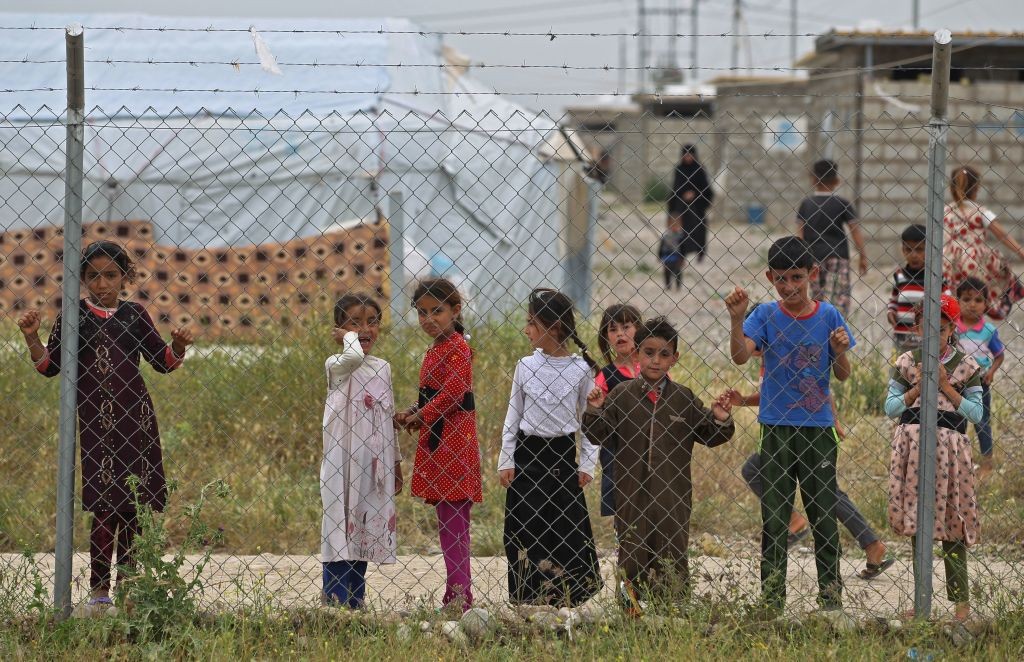
"For those in Kirkuk and Diyala, they are left feeling abandoned — not just by their own government and security forces, but also by the international community."
Policy recommendations
The country is at an impasse. With Erbil and Baghdad now paralyzed as protests in the Shi’a-majority south rage on, the situation in the liberated areas has become ever more precarious. Intermittent clashes are preventing any real return to normality for the vast majority of citizens, even as tensions worsen between host communities and IDPs — whether they are in camps or living freely in host areas.
These areas are notably majority Sunni-Muslim populated, with fluctuating majorities and minorities of Kurdish and Arab populations spread across the provinces. In Sinjar, the Yezidi minority occupies most of the city and wider district. Other minorities include Turkmen, Shabak, Christians, Assyrians, and others.
Social cohesion is the hallmark of a thriving society. When social cohesion among communities deteriorates or is put at risk, the most vulnerable within those communities are disproportionately affected. Amid rising human insecurity, deteriorating social cohesion only adds to suspicion and disenfranchisement, increasing the risk of violent confrontation, and raising the currency of armed non-state actors, who step in and offer security and protection.
In Iraq, social cohesion has been consistently eroding for decades. In the years since the U.S.-invasion, however, there has been a significant deterioration across local communities, especially as demographics change with regular rounds of displacement. Previously more diverse communities have dramatically changed in the last 15 years, becoming more isolationist and homogenous as trust deficits among groups in society grow. They have not been aided by a string of consecutive governments since 2005 that, led by a Shi’a-majority coalition of parties, has fostered a culture of corruption whereby even basic services have been sacrificed in marginalized communities.
The recent war against ISIS destroyed most of what was left of community ties, sowing anger, betrayal, and disillusionment among those communities ravaged by the group, as well as those Sunni communities that initially gravitated toward the model of governance it offered. Most communities have been left insecure, and with both the proliferation of militias and concurrent power vacuums across the liberated areas, the country’s post-conflict landscape is defined by communities awash with weapons. This is particularly true of areas where households are beholden both to ISIS sleeper cells and controlling militias (with a limited official security presence).
The assumption is that this level of human insecurity, left unaddressed, will only breed more anger among the marginalized, resulting in another round of civil conflict. As ISIS made clear, the risk is that these conflicts within Iraq are becoming more and more violent over time. The current situation calls for an urgent response — not just in the concrete terms of reconstruction and rehabilitation of damaged and destroyed cities and towns, but also with regard to reconciliation and genuine efforts to rebuild social ties and rehabilitate communities. The various cycles of civil conflict seen over the last 17 years are not only lasting longer in duration, but the gaps between each cycle are getting shorter. The continued avoidance of dealing with the root causes are sparking new drivers of conflict in and of themselves. Thus, reconciliation efforts now require a deep-rooted focus not just on the latest conflict, but also on the longstanding grievances that continue to go unaddressed from previous conflicts, or years of marginalization and disenfranchisement.
The Iraqi government and the international community must now work urgently to address ongoing splits in the social fabric across the country, in a way that goes beyond cosmetic changes merely designed to improve macroeconomic indicators. The current response to the demands from protesters for a new, accountable government and fresh elections reflects both an indifference to the country’s citizenry on the part of the political elite, as well as a refusal by those same actors to expend political capital on effecting real reform.
As the burden increases and the response remains almost nonexistent, there is a real urgency to address the needs of these communities. The immediacy of this response is required both to support local communities that are overburdened and in desperate need of support, but also to reduce the future drivers of conflict that are once again resurfacing. Within the mechanisms already available, the response requires better coordination of activities — on the international and local levels — that both empowers local actors and ensures the international community better supports development activities. The governments in Erbil and Baghdad must also engage in a more focused way on the domestic response, particularly in regard to the reconstruction and rehabilitation of damaged areas. Policy recommendations are noted herein:
-
Prioritize and strengthen strategic development support conducted by local organizations on a hyper-local level to aid communities, prioritizing social cohesion, reconciliation, and rehabilitation efforts. This requires both donor support from the international community and efforts by the Iraq government to make it easier for local NGOs to carry out their work. The reliance on international actors (notably emergency relief actors) to conduct social cohesion work should be discouraged and brought to an end. In this instance, strict divisions of work between humanitarian efforts/emergency response and development activities must be redrawn, to ensure the correct actors are implementing work in line with their expertise.
-
The international community must provide material political support to local civil society and ensure that all forms of harassment of local groups by security actors and the government are vehemently disavowed. Public support for groups that are experiencing harassment will help to expose patterns of behavior on the local and national levels. This should also include the implementation of a reporting mechanism within the JCMC or other diplomatically-led sub-groups (such as the human rights working group, or reconciliation working groups, where embassies and UN/INGOs are leading on status updates on the situation) and should be utilized to monitor and report on such behavior. Diplomatic efforts between the international community and the Iraqi governments (both the KRG and federal government) should include bilateral and multilateral advocacy of joint support for the NGO community, including an end to harassment of all groups.
-
Precise and coordinated financial support efforts should be contingent on the Iraqi government committing to reconstruction and rehabilitation of damaged and destroyed cities in liberated areas, alongside a wider national reform package for all underserviced areas (including the protest cities). This could come through the available multi-trust fund mechanisms.
-
The international community should request more power within the JCMC to give it greater oversight as the current political crises drag on. This should also extend to an internationally led harmonization process that coordinates Baghdad-Erbil management of INGOs/NGOs within the country. This is particularly important as the country prepares to take back refugees from the al-Hol camp (to Ninewah, but only those who identify Ninewah as their area of origin) and deals with the ongoing question of what to do about ISIS fighters, both foreign and local.
-
Health services should be prioritized amid growing concerns over coronavirus and the general health of IDPs — especially as cases emerge in Kirkuk, with fear that it may spread into the IDP camps. Testing in areas of high population concentration, such as IDP camps, should be prioritized by both the KRG and federal governments. Monitoring of such efforts can be supported by the international community as part of existing humanitarian relief work (by changing budget and reporting lines to include testing and treatment for COVID-19 within the health provisions of such support).
-
Advocacy efforts toward the establishment of a new government in Baghdad, aided by a sustained diplomatic effort from the international community, should focus on the creation of a fully functioning Ministry of Women’s Affairs, funded appropriately, which can focus primarily on issues of the greatest concern to the most vulnerable women and families. Prioritizing this at the central government level would provide more formal avenues of recourse for women, and central authority over the most dangerous issues affecting the liberated areas. This would include IDP female-led households and support for the right of return, housing, land, and property rights, and citizenship rights. It should also prioritize tackling violence against women in all forms.
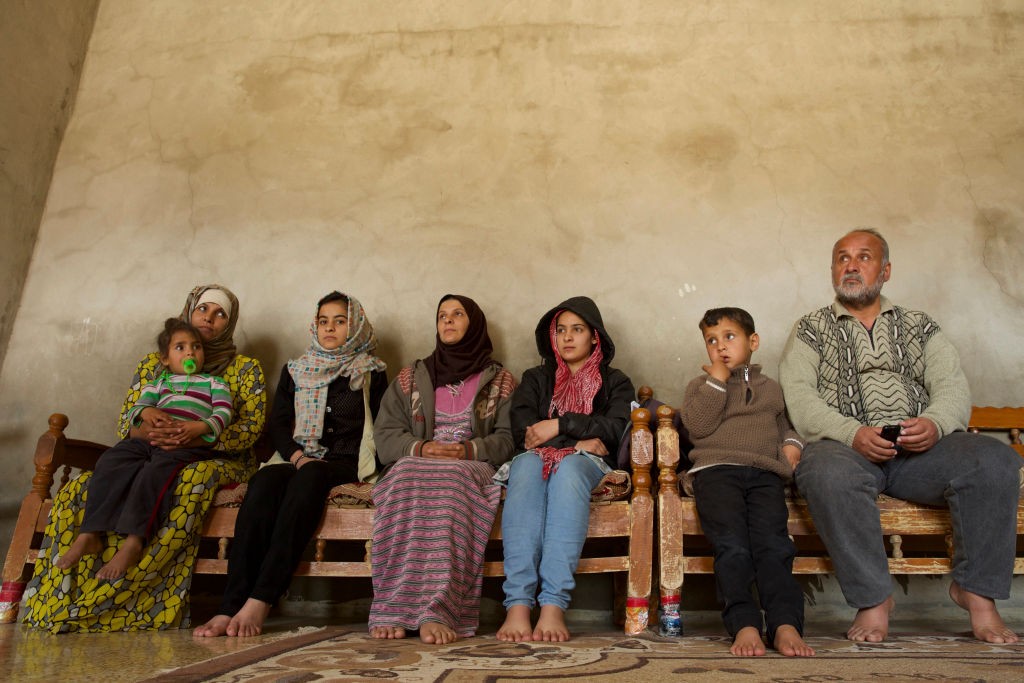
"These sensitive areas will remain lawless, insecure, and dangerous until there is genuine recognition by the successive governments that have continued to fail the people they purport to serve."
Conclusion
We, as the international community and the actors within it, continue to take for granted the resilience of victims of war and vulnerable groups. We hear the feel-good stories that keep our spirits up and confirm our convictions that people remain strong and able to withstand hardship with only the sheer will to survive. But, in truth, that is simply not good enough. Every actor, no matter how well intentioned or directly or indirectly responsible, has played a part in the disintegration of the liberated provinces, and the communities that inhabit them, amid a broader disintegration of the country as a whole. These sensitive areas will remain lawless, insecure, and dangerous until there is genuine recognition by the successive governments that have continued to fail the people they purport to serve. For its part, the international community needs to step up its interventions and think more strategically about how best to fund both emergency and humanitarian relief alongside broader development work. Iraqi NGOs and rights actors are the bravest of us, and they need more support, recognition, and backing. The country and its people — particularly its innocent civilian victims — deserve much better. With the protests igniting hope and giving rise to the possibility of real change for the country, there must be equal focus on the most desolate of areas and the most vulnerable of people. If not, continued conflict is not just inevitable, but the cycles between rounds of conflict will only decrease until eventually there is nothing but incessant conflict.
“What does it [advocacy] all matter in the end? Let’s be honest, Iraq is really only 18 provinces. At least Kirkuk gets periodic attention when Baghdad and Erbil want to fight over it. … Diyala hasn’t been on the map for years,” said a rights actor in Diyala.
With the hope still for a new government, pushed by a protest movement that is changing the political discourse, Iraq cannot afford to continue its worst habits. This is a moment for much more than political change.
About the author
Hafsa Halawa is a non-resident scholar at MEI and an independent consultant working on political, social and economic affairs, and development goals across the Middle East and North Africa (MENA), and Horn of Africa regions. A former corporate lawyer, Halawa has held positions in government, the UN, INGOs/NGOs, corporate multinationals, private firms, and think tanks. She now consults independently for a similar broad set of clients on a variety of issues, at request.
Endnotes
- Evidence provided is based on dozens of interviews conducted with rights actors in the provinces. Most interviews were conducted via Skype, or in person in Erbil during a number of research trips throughout 2019. Further anecdotal information also comes from a privately commissioned research project completed by the author, of which surveys and focus groups were conducted between November 2018 and June 2019 with over 2000 people from different backgrounds and experiences within the areas in question. Furthermore, over a dozen interviews were conducted by the author with development actors and experts in the international community working in/on the provinces of Kirkuk, Ninewah, and Diyala (all international actors interviewed are based in Erbil).
- Interviews conducted in Erbil between April and November 2019.
- Local rights actors note the difficulty in accessing certain areas, or camps — i.e. where there is work in Mosul City, there is little to no footprint for NGOs in South Mosul. In Diyala, Jalawla and other villages remain completely underserviced, particularly harming the minority Turkman community, which is increasingly isolated. Interviews with women’s rights actors in Mosul and Diyala, Dec 2019 – Feb 2020.
- Officially, as of December 31, 2019, IOM’s IDP tracker lists just under 1.5 million IDPs across the country, down from a peak of 3.5 million in July 2016 (full list and displacement tracker accessible here: http://iraqdtm.iom.int/IDPsML.aspx). Further data shows the number of returnees, as registered by IOM to number over 4.5 million returnees, data provided as of December 31, 2019 here: http://iraqdtm.iom.int/ReturneeML.aspx – although importantly the data reflects less than 500,000 returns have taken place in the last 12 months between Dec 2018 – Dec 2019.
- International organizations have noted the government practice of closing camps, severely affecting those citizens from areas of origin such as Anbar, Kirkuk, Ninewah, and Salaheddin, Unicef Iraq Humanitarian Situation Update Aug & Sept 2019.
- For further reading on the scale of the sustained problems, see: IDMC & NRC “Nowhere to Return to, Iraqis’ search for durable solutions continues,” November 2018.
- As described by local women’s rights actors in Mosul and Kirkuk, interviews held January – February 2020 (via Skype).
- The government does not formally recognize NGOs working in the “IS families” designated camps and does not formally issue work permit to aide those communities.
- Anecdotal stories from several interviewees argued (from their experience) that many of the Iraqi Security Forces present in the areas are former “rehabilitated” ISIS fighters, who hail from powerful Sunni tribes in each area. Through power exerted via the security apparatus, they have managed to regain standing within the local branches of official security forces (although this has not been confirmed by any officials and remains unverified). Interviews via Skype, December 2019 – February 2020.
- Interview with local security analyst in Erbil, July 2019.
- All UN agencies and most INGOs follow protocol as designated through the UNDCC (department for safety and security), which has not deemed Kirkuk or Diyala safe for international travel.
- Interviews conducted via Skype with directors of a number of local NGOs in the area, between December 2019 and February 2020.
- Response from survey response collected through privately commissioned research. Respondent was an adult female IDP from Hawija, displaced to Laylan 1 Camp, March 2019.
- Interviews with four local staffers for different INGOs, via Skype and in-person (Erbil), January – July 2019.
- Interview with US diplomat, Washington D.C., March 2019.
- Interviews (in person and on Skype) with international staff at a number of INGOs working on humanitarian assistance, emergency relief, and development in the aforementioned areas, January – July 2019.
Photos
- Iraqi civilians, who fled from Daesh controlled Hawija district of Kirkuk, are seen at Daqouq tent city southern Kirkuk, Iraq on November 12, 2017. (Photo by Ali Mukarrem Garip/Anadolu Agency/Getty Images)
- A picture taken on October 18, 2017 shows displaced Iraqis, who fled from Hawija in 2014 to Kirkuk, riding in vehicles as they return to Hawija, after the town was retaken by Iraqi forces. (Photo by AHMAD AL-RUBAYE/AFP via Getty Images)
- A displaced Iraqi woman prepares to board a bus at a camp for displaced people in Hammam al-Alil, south of the northern Iraqi city of Mosul, on August 27, 2019, as they are transferred back to Kirkuk province. (Photo by ZAID AL-OBEIDI/AFP via Getty Images)
- Iraqi soldiers conduct a military operation against Daesh at the rural areas of Saladdin and Kirkuk, Iraq on December 29, 2019. (Photo by Ali Makram Ghareeb/Anadolu Agency via Getty Images)
- Women and a girl walk outside tents at Laylan camp for the displaced about 25 km east of the northern multi-ethnic Iraqi city of Kirkuk on May 9, 2019. (Photo by AHMAD AL-RUBAYE/AFP via Getty Images)
- Parliament building of Iraq’s KRG is seen as it reopens after two years in Erbil, Iraq on September 15, 2017. (Photo by Yunus Keles/Anadolu Agency/Getty Images)
- Children stand behind a wire fence, at Laylan camp for the displaced about 25 km east of the northern multi-ethnic Iraqi city of Kirkuk on May 9, 2019. (Photo by AHMAD AL-RUBAYE/AFP via Getty Images)
- Inhabitants of Telyara village some 10 km north east of Mosul on March 27, 2017. (Photo by Noe Falk Nielsen/NurPhoto via Getty Images)












